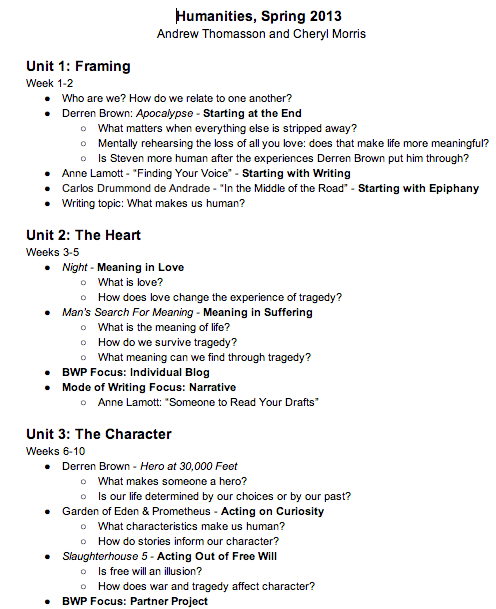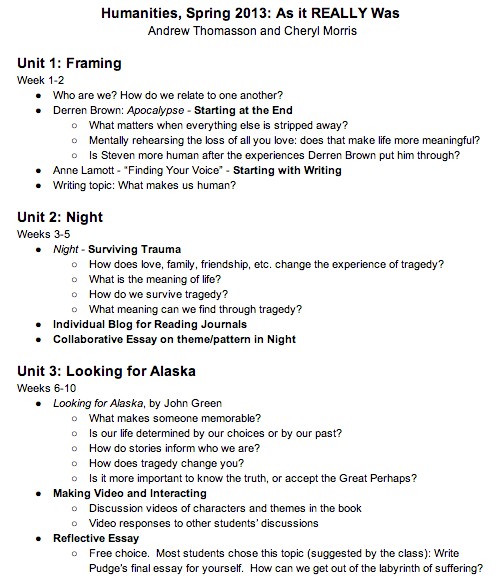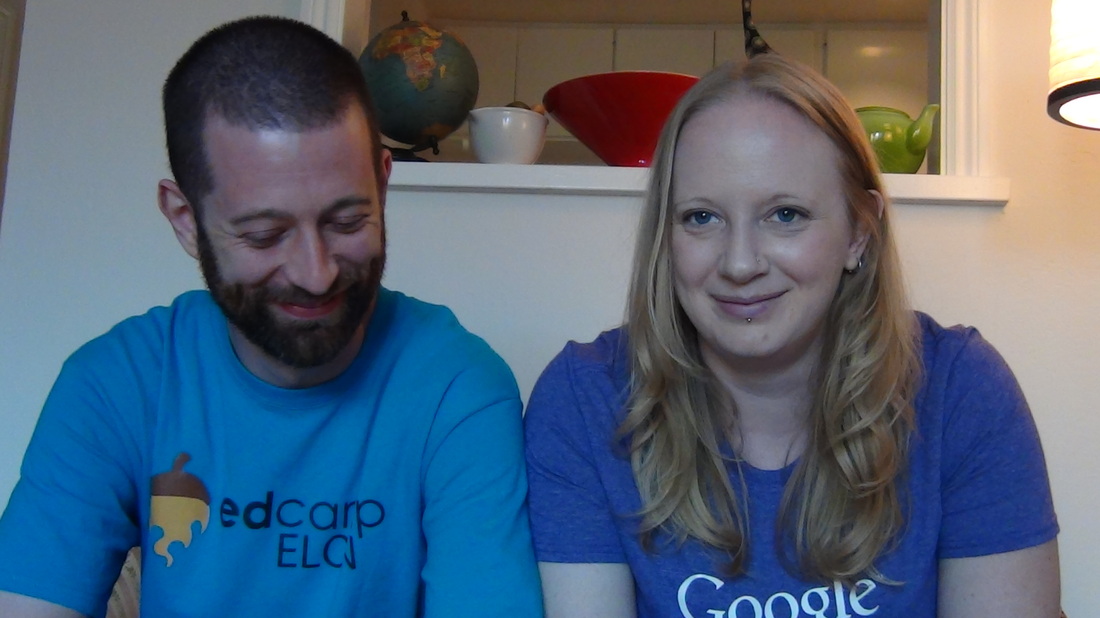We'll start with last summer. At the beginning of August 2012, Andrew and I decided to teach our classes together. Inspired by a comment Jon Bergmann made to me at the CUE Flip day, we began planning to teach collaboratively from across the country. The first thing we did was create unit maps.
Here's one that we made:
This is the part of the process where I excel. I love coming up with the overall theme and making the units into a coherent whole...and I love the moment near the end of the course where students realise that everything we did fits perfectly into the frame we constructed for it. I've had that happen a few times on my own, but this year, it seemed like every class got there and the students recognised it more completely. The difference is that now, I have someone else to help me figure out how to actually make it work. I have probably several dozen documents created in the first eight years I taught that try and fail to do this, for a variety of reasons.
Now that I've experienced success, I see that the main reason they failed was for lack of Andrew Thomasson.
It takes us a few days of playing around with these course maps to be satisfied with them. However, what we've discovered is that we do not want to get into any more detail than what is listed on the document above.
- Things change. Books aren't available, copy machines break, extra assemblies or snow days put us off schedule...whatever.
- We plan day-to-day. We do this purposefully because we want to be responsive to the formative assessment we do daily in class.
- We are student-centred. Our students get to call some of the shots - what they read, how they read, what kinds of activities we do, even what skills or objectives we have for the unit.
What that all means is that our final plan rarely looks like the one we started with. Here's the ACTUAL Humanities curriculum we taught:
But that's why we have to plan nightly. If we don't, then we're not responding to the needs and decisions of our students. That means our hangouts tend to be 30-45 minutes in the afternoon (Andrew's after-school and my lunch), where we discuss the day and share formative assessment, and the evening hangouts (usually from 8 EST - 9:30 EST) are for planning for the next day, writing curriculum or assessments, and revising the course direction as/when needed. During that time, we go course by course and discuss the following:
- What the skill focus for the day is and how proficient they are in that skill
- What the previous lesson built up to, and how that would look for the rest of the unit
- Any relevant student decisions and how to incorporate those while still providing solid instruction that accomplished our goals
- Any relevant classroom management issues, and/or other troubleshooting
- What needed to be produced and made ready for the following day
To facilitate this process, we have a shared Google Drive account with an attached email ([email protected] or [email protected]) and website. We also use AutoCrat as a way of organising our folders and files in Google Drive. Basically, students fill out a form on the class page on our website, and then they get an email with the document. That document is automatically shared and correctly filed in our shared drive and in our personal drives too. We "own" the document, so if a student needs help, it's pretty easy to help.
It's hard to give you an accurate impression of how we spend our time together, because it really does change based on circumstances and schedules. And because the friendship comes first, there are nights (or even weeks!) when we don't really do planning, except in vague outlines. There is a lot of flexibility in our relationship, which we both really need.
Certain things like making copies, returning school email, dealing with paperwork and meetings, etc. can't be done collaboratively. But we have made an effort to make sure we're as collaborative as possible because that's just how we work best.
I'm not sure I have much more to say about our workflow. If I didn't answer a question you have, or missed something entirely, let me know and I'll try and address it in comments or as a follow-up to this series of posts. Thanks again to Gary Strickland on Twitter for the idea to do this series. It's been really fun, and actually helped us write our book chapter on collaboration.
And of course, thanks to Andrew Thomasson, without whom I would have much less to say about my practice and classroom. He is a pretty incredible friend and colleague, and I am incredibly indebted to him for so much. He has helped me become a much better writer, he has taught me how to challenge my students while still supporting them all, he has shown me that relationship is the most important factor in life or in the classroom, and he has taught me what it means to really be a friend, No Matter What. There are few words for how grateful I am, how lucky I am, and how absolutely amazing it is to have him as my collaborative partner. Teaching means embracing change, and I'm so excited to see what the future holds for us, and for our students.
So Andrew, thank you. A thousand times over.






 RSS Feed
RSS Feed
